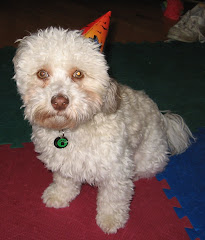These analyses are from my brokerage account tool. It takes dividends into account. I compare my performance to a global balanced benchmark. I erased the amounts of my investments, but the percentage change is there.

I beat the global balanced benchmark for all periods but 1 year. Since march 28, 2008, my performance is 8%, while the benchmark is -2.6%.
My benchmark is composed of a bunch of ETFs with dividends re-invested. Half of my initial benchmark investment was in a Canadian bond ETF (XBB), and the other half replicated the MSCI world index. These days you can invest in an MSCI world ETF, but not back in the old days of March 2008. So I looked at the composition of MSCI world, and replicated it with a Canadian ETF, a US ETF, and an EAFE ETF. (No emerging markets.)

You can see that the Canadian portion did really well. That's partly because the benchmark portfolio, as well as my portfolio, is in Canadian dollars. The Canadian dollar has appreciated against the US dollar and the Euro, so that's why Canada did well compared to the other regions. If you had a portfolio denominated in another currency, Canada would still have outperformed, but the other regions would have shown a better return than in a CDN$ portfolio.
My portfolio has 3 preferred shares (they have "PR" in the symbol). I haven't held them very long, but they are doing ok. They all trade below redemption value, so I think one could buy more. However, with interest rates going up the preferred shares might drop some more. Or, if people take higher interest rates as a sign of a recovery, the preferred share prices might go up instead. My three stock picks have done very well since I bought them. You can see my previous posts for discussions about these shares.

I also bought government real return bonds. These provide me with a global real return bond exposure. Some of these bonds were bought in mutual funds so I use equivalent ETFs in the portfolio to automate tracking. The Canadian real return ETF has done well, but the others have not, mainly because, as I mentioned above, the Canadian dollar appreciated against other currencies, reducing my returns from foreign bonds.

My three stock picks are hedged through a double inverse Canadian ETF (HXD). That's the big stinker in the portfolio. As an alternative to this ETF, I could have hedged with long-term index puts, or I could have used stop loss orders. The problem with stop loss orders though is that you can get whipsawed. You sell when the stock drops and lock in your loss, but you don't buy back until the stock goes back up. Classic opportunity loss. I still think that this is a cyclical bull in a secular bear market. Consequently, I'm going to hold on to my hedge at least until next January, or next market drop bigger than 10%.
I also bought a put on the SPDR KBW regional banking ETF (KRE) right before it shot up 20%. Ouch! Good thing I only bought a tiny amount.
Finally, I also bought two Australian bonds. One is a real return, with a real yield of 2.83%, maturing in 2015, and the other, also maturing in 2015, is a conventional bond yielding 5.35%. These will be hard to track because their market value is not automatically updated in the tracker. I'll also have to add interest payments by hand.




No comments:
Post a Comment